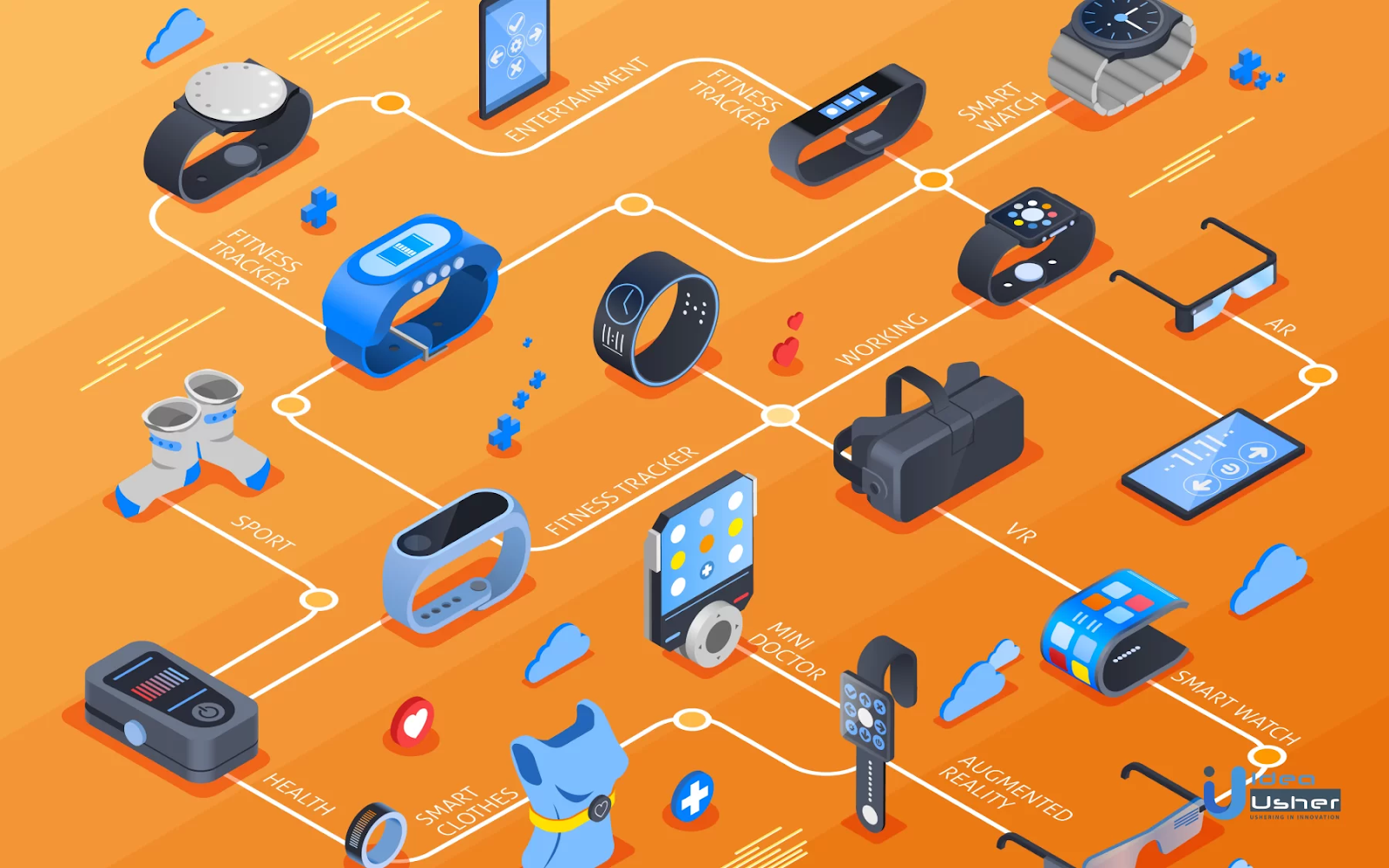Wearable IoT security is essential for safeguarding biometric data, behavior patterns, and connected devices. Learn how to protect your body-edge technology in a hyper-connected world.

Introduction: The Rise of Human-Digital Symbiosis
Wearable IoT security is becoming critical as devices blur the line between biology and technology. Smartwatches, AR glasses, and exoskeletons now monitor cardiac rhythms, spatial awareness, and behavioral patterns — making the human body a real-time interface for computation. But with proximity comes vulnerability: stolen passwords are replaced by stolen health identity and physiological signatures. Security now operates at the edge of the human body.
-
Introduction: The Rise of Human-Digital Symbiosis
-
The Human-Device Perimeter: A New Security Frontier
-
Why Traditional Security Models Fail
-
Zero-Trust for Wearables: “Never Trust the Skin by Default”
-
Biometric Encryption: Security Written in the Human Body
-
Edge Security: Intelligence Without Exposure
-
Identity-Centric Device Protection
-
The Threat Landscape: Invisible Attacks, Human Consequences
-
Industry Imperatives: Designing Resilience by Default
-
Future Vision: The Cyber-Biological Covenant
-
Conclusion: Defending Humanity in the Age of Connected Existence
In a world where technology is dissolving the boundaries between biology and circuitry, wearables are no longer mere accessories — they are extensions of the human nervous system, silently capturing biometric rhythms, behavioral patterns, emotional states, and even glimpses of our cognitive thresholds.
From smartwatches decoding cardiac anomalies in real time, to AR glasses interpreting spatial context, to industrial exoskeletons enhancing human strength and precision, the era of human-technology symbiosis has commenced.
But with proximity comes vulnerability. When devices sit on the body, near vital organs, and inside private lived spaces, security stakes transform from digital risk to biological and social risk. Unauthorized access is no longer about stolen passwords — it is about stolen health identity, behavioral intelligence, and intimate physiological signatures.
The frontier of cybersecurity has moved.
Its new battleground resides on the skin, beneath the pulse, at the edge of the human body.
This is the dawn of bio-proximal cybersecurity — and it demands an architectural revolution.
The Human-Device Perimeter: A New Security Frontier
Unlike smartphones or laptops, wearables are designed to:
- Access real-time bio-signals
- Continuously transmit micro-data streams
- Maintain permanent cloud or edge connectivity
- Operate with minimal user interface controls
- Blend into clothing, wrists, ears, glasses, or skin
They exist in perpetual sensing mode, blurring personal data boundaries:
| Technology Layer | Example | Data Risk Category |
| Biosignal | ECG, oxygen levels, neural activity | Medical + biometric identity |
| Behavior | Motion, gait, habits | Personal profiling |
| Location | Indoor/outdoor positioning | Safety + stalking risk |
| Environmental | Surroundings, audio | Surveillance risk |
| Device Mesh | IoT ecosystem link | System-wide attack gateway |
Wearables do not simply store data; they continuously create a living fingerprint of the human.
This demands a security philosophy that treats the body as a sacred perimeter.
The Collapse of Traditional Security Models
Classic cybersecurity frameworks assume:
- Discrete user sessions
- Password- or token-based identity
- Server-driven verification
- Centralized threat processing
- Intermittent device connectivity
Wearables shatter these assumptions.
They operate autonomously, locally, and persistently. They think, predict, send, listen, and evolve — often without user perception.
Thus traditional defenses — authentication walls, periodic checks, per-device firewalls — are architecturally obsolete.
We are entering the era of:
- Zero-Trust Identity
- Continuous Authentication
- Edge-Resident Intelligence
- Encrypted Biometric Signatures
- Contextual Access Control
- AI-powered Threat Prediction
Security must exist everywhere — at once, invisibly, continuously.
Zero-Trust for Wearables: “Never Trust the Skin by Default”
Zero-Trust in wearable environments means:
- Every device identity is verified at all times
- Every data point is authenticity-checked
- Every network hop is inspected
- Every session is encrypted end-to-end
- Every system assumes breach until proven otherwise
Wearables require dynamic trust computation, not static permission grants.
A smartwatch connecting to a smartphone should not trust it by pairing history — it should trust only cryptographic validation, behavior pattern alignment, and context-aware confirmation.
Identity is no longer a PIN — it is a pulse.
Authentication becomes biophysical truth + behavioral consistency.
Biometric Encryption: Security Written in the Language of the Human Body

The next phase of encryption is bio-anchored:
- Heart rhythm authentication
- Muscle-conducted electrical signals
- Neural intention detection patterns
- Vascular signature mapping
- Gait and kinetic rhythm analysis
These signals form a cryptographic identity fabric unique to each individual.
Biometrics stop being just input — they become keys, walls, and guardians.
But biometric security has a paradox:
If a password is stolen, you can reset it.
If your heartbeat is stolen, you cannot generate another.
Thus biometric encryption must be:
- Non-storage based
- Ephemeral and rotating
- Edge-processed only
- Decoupleable from identity metadata
Biometrics are powerful — but dangerous if mishandled.
True innovation lies in biometric-derived cryptography without biometric persistence.
Edge Security: Intelligence Without Exposure
Wearables cannot rely solely on cloud shielding. Security must live:
- At the sensor layer
- On the silicon
- Inside edge models
- Inside firmware
- At network entry points
Edge security principles:
Local Data Processing
Only insights travel — not raw biometric streams.
Hardware-Bound Trust
Secure enclaves, tamper-proof circuits, signal integrity locks.
AI-On-Device Threat Detection
Detects motion anomalies, usage oddities, connection spikes, biometric inconsistency.
Predictive Security
Threat anticipation via micro-pattern recognition.
Wearables must develop a self-defense instinct — autonomous cyber immunity.
Identity-Centric Device Protection
Identity in the wearable era is:
- Physiological identity
- Behavioral identity
- Contextual identity
- Device mesh identity
- Environmental identity
Security becomes multi-identity orchestration.
Identity layers evolve from “who the user is” into:
- How the user moves
- How their physiology behaves
- Where they physically exist
- What devices they coexist with
- What routines they follow
Access becomes a conversation between signals — not a binary gate.
The Threat Landscape: Invisible Attacks, Human Consequences
Wearable + IoT vulnerabilities include:
| Threat Type | Risk |
| Signal spoofing | Fake biometrics fooling devices |
| Man-in-the-body attacks | Intercepting bio-telemetry |
| Gait duplication | Behavioral impersonation |
| Proximity hacking | NFC/BT exploitation |
| Edge model poisoning | Corrupting device intelligence |
| Cloud identity theft | Biometric profile hijacking |
| Health manipulation | Altering medical wearable data |
| Location inference | Movement stalking |
Worst-case scenario:
Attackers don’t just steal your data — they steal your biological identity and behavior patterns.
Industry Imperatives: Designing Resilience by Default
Security is no longer a feature; it is a moral architecture.
To protect human-adjacent systems, industry must adopt:
Minimum exposure architectures
Least data, shortest travel, zero central dependency.
Consent-driven telemetry
User sovereignty over physiological data.
Privacy-by-bio-design
Encrypt first, transmit later — if at all.
Firmware sanctity
Secure boot, quantum-safe cryptography, OTA integrity checks.
Audit-in-motion
Continuous self-verification + transparency logs.
Ethical AI frameworks
No exploitation of personal physiology for monetization.
A Vision for the Future: The Cyber-Biological Covenant

Wearables and IoT promise a world where:
- Health crises are detected before symptoms
- Workforces operate intelligently and safely
- Cities decode movement to optimize life
- Every individual becomes data-empowered
- Technology behaves like a guardian, not a spy
But this vision can only thrive if protected by a covenant of trust, encryption, identity sovereignty, and ethical intelligence.
The body is not a database.
It is the most sacred system ever connected — life itself.
Security at the body’s edge is not a technical project;
It is a human obligation.
This is not just cybersecurity.
It is bio-digital integrity engineering.
And it will define the next decade of innovation.
Conclusion: Defending Humanity in the Age of Connected Existence
The future is not screen-bound — it is skin-bound, motion-bound, breath-bound, thought-bound.
We are converging toward a reality where wearables become cognitive guardians, IoT becomes ambient intelligence, and the body becomes the authentication engine and the identity signature.
In this new era:
- Trust must be earned continuously
- Identity must be immutable yet protected
- Intelligence must occur at the edge
- Data must remain sovereign
- Security must be ethical, invisible, adaptive, and unbreakable
The next wave of innovation will not be measured in speed, size, or convenience —
but in how gracefully we protect the intimate boundary between humankind and the technology that embraces it.
We are not building devices.
We are engineering digital armor for the human body.


